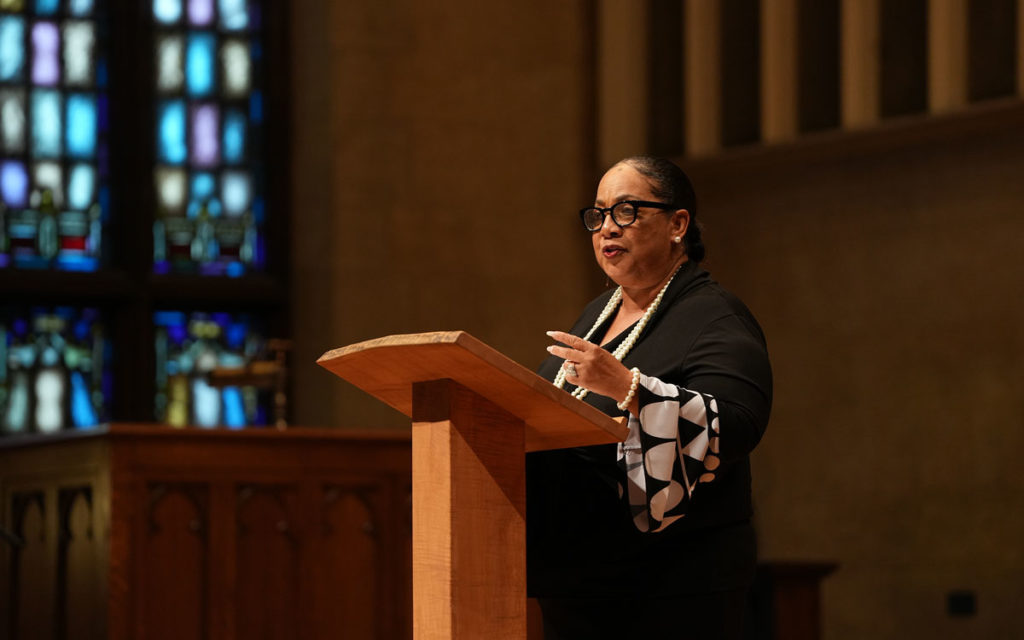Quote Unquote: Civil Rights Lecture 2023
This year’s Dr. Martin Luther King Jr. Civil Rights Lecture on Monday, Jan. 16, provided personal historical perspective along with a celebrated example for inspiration. The speaker, Sheyann Webb-Christburg, is known as one of the youngest activists during the Civil Rights Movement in Selma, Alabama, in the 1960s, and was even described by King, who she met at her church when she was seven, as the “smallest freedom fighter.”
“As a child, the civil rights movement in Selma, Alabama, was not a documentary to me. It was live, and in living color,” Webb-Christburg told her audience in Dimnent Memorial Chapel. “All of the ugly wounds of segregation: The sitting in the back of the bus, the ‘For White’ and ‘For Colored’ signs that you would always see. And not even being able to vote if you were an African American. The lynchings, the verbal and physical abuse.”
Even so young, Webb-Christburg recalled, she was inspired by King’s message and spirit, and would sneak out of the house to attend meetings, defying her parents, who knew the dangers.
She experienced those dangers directly on March 7, 1965, when at age eight she was the youngest participant in the voting-rights march now known as “Bloody Sunday.”
I encourage you to always stand strong behind principles and purpose.
“This particular march was led by young people who understood the mission, who understood Dr. King’s ministry of nonviolence,” she said. “I remember as we were marching down Broad Street, which is the main street in Selma. I could see whites on the sidelines saying bad words, trying to distract the marchers. But the marchers kept on marching quietly with their heads held high, because they had been instructed no singing. It was quiet. Many of the whites on the sidelines came to the marchers, spitting on them, trying to throw things at them to distract them, but the marchers kept on marching.”
Things became worse, Webb-Christburg noted, when the group reached the cordon of police officers arrayed to stop them, and still continued to march.
“Tear gas had begun to burst in the air. People were being beaten down with billy clubs,” she said. “The way the horses and the dogs were pushing their way into the crowds, just trampling over people. And people had begun to run. While the tear gas was burning in the eyes of many marchers and even myself, I could see people falling, crawling, crying, bleeding.”
Film and photos from that day made the national news, and are credited with building support for the Voting Rights Act and the Civil Rights Movement. Webb-Christburg noted, though, that although the years since have seen political, social and economic progress, there’s more to be done — and that, as was true 57 years earlier — young people like the students in the Dimnent audience are the ones who can see it through.
“It’s a long road to change, but it’s very necessary for each of us not to add to the problem. Not to add to the challenges at hand, but to become a part of the solution,” she said. “Especially to the students of Hope. I encourage you to always stand strong behind principles and purpose. You are at the right point in your lives right now to improve situations, implement plans, mobilize, organize, strategize, and become great leaders of change. I encourage you students, especially, to stand up and speak up on what you know that’s right, that will help to complement the attitude of what will make life good and better for each and every one of us.”
Please visit the college online for a complete photo gallery from Dr. Martin Luther King Jr. Day 2023.


